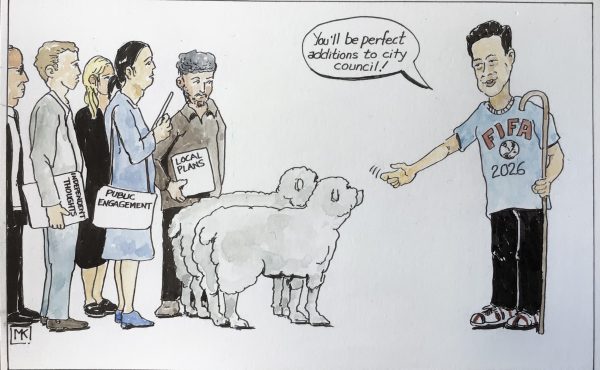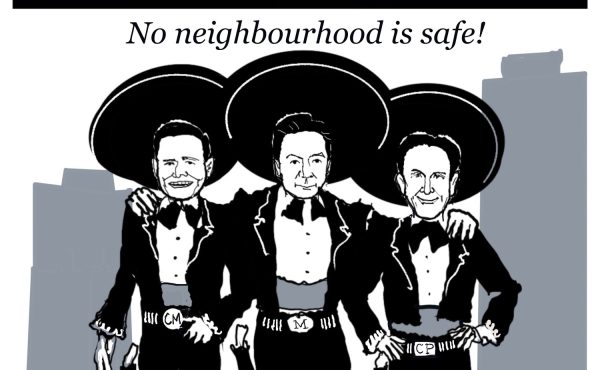Eric Cesal shares his personal account of the direction the profession of architecture needs to move to on the heels of the recent financial collapse, in his most recent book Down Detour Road.
Author Eric J. Cesal, (MIT Press, 2010)
Reviewed by Joshua Jordan, re:place Magazine
Down Detour Road is both the personal memoir of an architecture graduate with a tragicomic longview, and a serious appeal to a new kind of pragmatism on the heels of a financial collapse that has everything to do with architecture.
In 2008, Eric Cesal left grad school in St. Louis with an M. Arch and an MBA, quickly lamenting the haplessness with which his education had left him in the search for his particular vision of architecture. And where many can relate, it had most plainly left him with a haplessness for finding any job. In an effort to withdraw and regroup, he set to transcribe his analysis of the current architectural pathos through the lens of his own personal heartbreak.
First, transcending the conventional series of blame for the continuing financial crisis of 2008 (poetically dubbed The Great Wake), Cesal argues that it was a shift in cultural attitude about architecture that ultimately allowed the dissolved housing bubble to cripple the US economically. Everyone who wanted to get rich quickly was responsible, particularly those who treated housing as a commodity. “If [a] man only sees his house as an investment vehicle…then he has little use for an architect.” It is this dissonance of architectural intention and cultural reality that drove the analysis of the book, and helps to draw its most trenchant conclusions.
Anyone who has read an economist’s work will be familiar with some of the structure of Cesal’s book: a litany of simplified analogies that need to be read repeatedly until they are not taken for granted. These analogies are diagrammed along with figures from the world of architectural employment and fee structures, in a series of chapters describing several different roles Cesal sees the architect playing in modern society. The ambitious pulpit he builds in the chapters is tempered in intermissions by warm, personal stories united by their familiar, Kerouacian world-weariness. These stories will hit all-too-close to home for most architecture students.
The conclusions drawn from these architectural role-playings look something like this: The financial architect must embrace the same battle with finance that the client does, without simply paying lip service to bottom-liners. The value architect must collectively make the case that good architecture is worth more, and that any architecture is better than no architecture. The risk architect must make sure that architecture, as an idea, does not become a risk that is misaligned with the world that pays fees. The paid architect should be alarmed if clients are not paying for design, and panic when he/she realizes that even our top designers are not being paid. The idea architect should be heavily skeptical of design competitions or anything that openly devalues the work of architects as a whole – remembering that a good idea will always be valuable. The named architect must reclaim “architect” from those who use the word to describe anything that involves organization or design. The citizen architect (probably the crux of the book) must direct architecture toward the problems that most need the treatment of building knowledge and synthetic thinking – both out of moral obligation and professional self-preservation.
A citizen architect above other types, Cesal now works with Architecture for Humanity as director of design and reconstruction initiatives in Haiti. It seems appropriate that an architect driven by a higher calling has responded to a higher cause. At the same time, his departure from the continent highlights some of the difficulties with the ideas charted in Down Detour Road. More specifically, that the solutions are not nearly as clear or satisfying as the diagnoses. And it’s a familiar crisis for the humanitarian architect – whether to respond to obvious humanitarian emergencies, or to make a strong enough case for domestic emergency – to improve the built environment at home. Cesal’s book clearly makes that case, however. He shows that the post-industrial design world is, in its own way, kicking through the scrap yard of a devastated economy. It needs the love and attention of a profession in a self-sustaining identity crisis.
Cesal renews a romance with the idea of a “house as home” and “job as love” that I believe identifies him as an Architect before Economist. And simultaneously, it is the romantic illusions of the design establishment that end up looking threadbare, not Cesal’s own lectures on value analysis. This should probably be a collective gasp of affirmation and solidarity for architects (both students and professionals alike), to those responsible with being and hiring unpaid interns, and to anyone who wonders what exactly his or her role is as a designer. But again, the Down Detour Road does not provide these answers so much as provide an earnest, disarming recollection of what took us here. Many will take issue with the broad castings aside of central pillars of the design community. Ultimately, however, everyone will find something indignant to echo, and something that resonates with their faith in design.
***
Joshua Jordan is a graduate of the Environmental Design program at the University of British Columbia.




